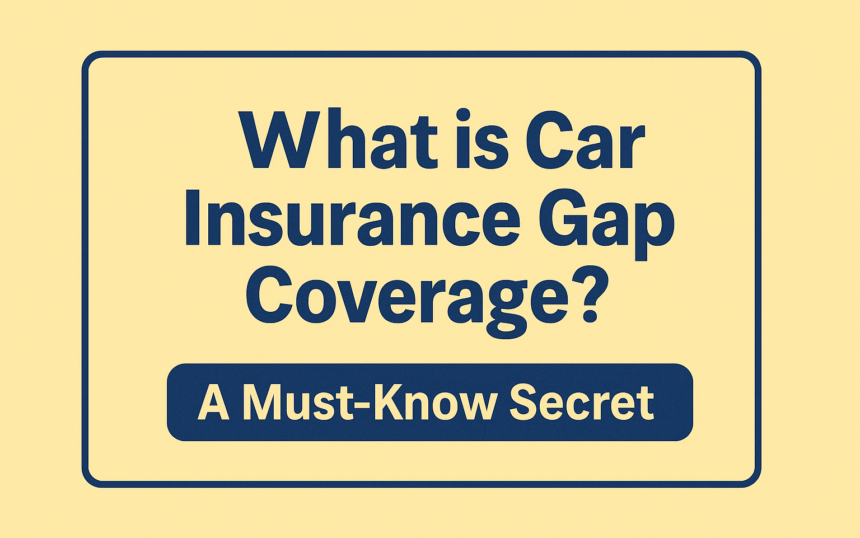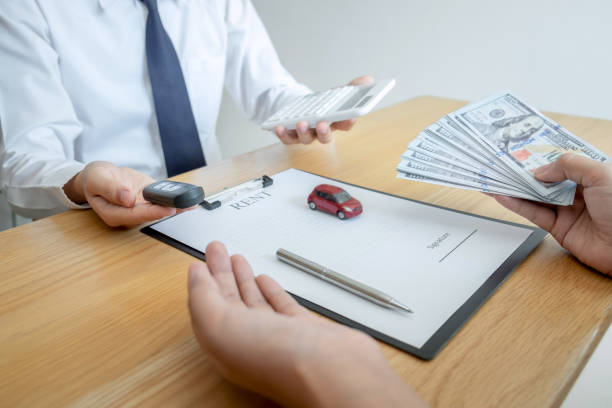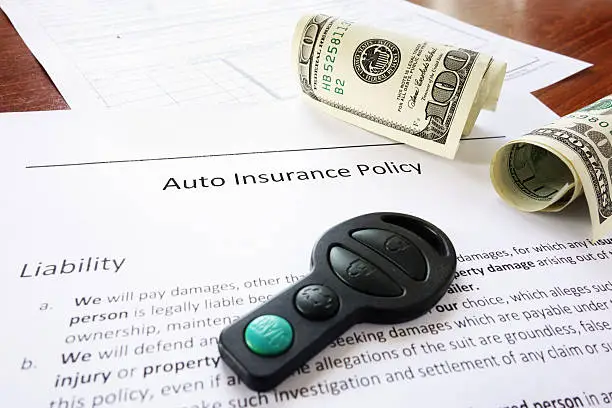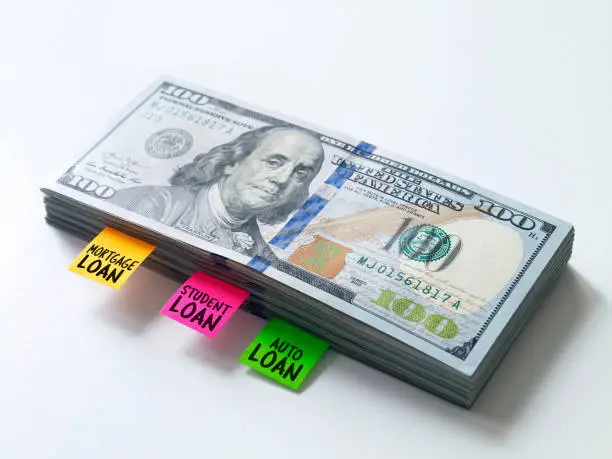
What is Car Insurance Gap Coverage? A Must-Know Secret
Ever wondered what car insurance gap coverage really means? It’s a special type of insurance that helps you pay off your car loan if your car gets totaled or stolen and its current value is less than what you still owe. In simple words: if your car’s worth drops but your loan doesn’t gap insurance covers that “gap.” No more paying thousands out of your own pocket.
In this post, you’ll learn how gap coverage actually works with a simple new-car scenario, when and why people truly need it, what it does and doesn’t cover, and how to buy it smartly whether from the dealer or your insurance company. We’ll also help you decide if it’s really worth it for your situation. Everything is explained so clearly that even a 5-year-old would get it no confusion, just clarity.
✅ What Does Gap Coverage Actually Mean?
Let’s make it super easy to understand.
Imagine you buy a shiny new car today. It smells new, looks perfect, and you love driving it. But guess what? The moment you drive it off the lot, its value goes down. That’s called depreciation. Your car might be worth less now, but your loan hasn’t changed. Uh-oh, right?
That’s where Gap Insurance steps in like a superhero.
“GAP” means Guaranteed Asset Protection. It covers the gap between what your car is worth now and what you still owe the bank.

🚗 Imagine You Buy a New Car What Happens Next?
Let’s say you bought a car for $30,000. You didn’t pay the full price upfront you took a loan.
A few weeks later, boom! You get into an accident, and the car is totaled (can’t be fixed). The insurance company checks your car’s current value. It has now dropped to $25,000.
But wait you still owe $29,000 to the bank.
Insurance will pay $25,000…
Who pays the $4,000 difference?
You do!
Unless… you have Gap Insurance. It covers that $4,000 for you. No stress, no money out of your pocket.
💸 How Gap Coverage Saves You from Paying Extra?
- You owe $29,000 on your loan.
- Your car is now worth $25,000 after depreciation.
- Insurance gives you $25,000 (based on current value).
- That leaves $4,000 unpaid.
- Gap Insurance pays this gap. 🎉
Without gap coverage, you’d have to pay that $4,000 yourself, even though your car is gone!
This is why gap coverage is like an emergency parachute you hope you don’t need it, but if you fall, it can save you big time.
🔍 Why Would Someone Even Need Gap Insurance?
You might be thinking, “Okay, sounds cool, but do I really need this?”
Let’s walk through it like a story.
Gap insurance isn’t for everyone. But in some situations, it’s super important like when your car loses value fast or you’re making small monthly payments.

🧾 When Your Car Depreciates Faster Than You Think
Cars lose value quickly. Like, really quickly.
- Day 1: You buy your car for $30,000.
- Month 6: It’s now worth $26,000.
- Year 1: It drops to $22,000.
- And it keeps going down…
If you had a small down payment, or your loan term is long (like 6–7 years), then your loan might still be big even when your car’s value is low.
That’s when you need gap coverage to protect you when your car’s value drops faster than your loan balance.
🏦 You Have a Loan or Lease Then It Matters
Here’s the deal:
If you lease a car or take out a loan, you don’t fully own the car. The bank or the leasing company does until you’ve paid every penny.
If the car is totaled in a crash or stolen:
- Your insurance pays the current value.
- But you still owe the full loan amount.
- You could end up paying thousands for a car you don’t even have anymore.
That’s not fair, right?
Gap insurance fixes that. It’s especially helpful if:
- You didn’t put a big down payment
- You took a long-term loan
- You lease your car
- Your car’s value is dropping quickly (some cars do!)
In all these cases, gap coverage can be a financial lifesaver.
🛡️ What’s Actually Covered in Gap Insurance And What’s Not?
Alright, now that you know what gap insurance does, let’s talk about what it actually covers and what it doesn’t. Because no one likes surprises, especially money-related ones.

✅ The Things Gap Insurance Will Pay For
Let’s say your car is totaled (means: it’s too damaged to fix). You still owe money on your car loan. Gap insurance steps in and pays the remaining loan amount that your regular insurance won’t.
Here’s a little story to make it clearer:
You owe $18,000 on your car loan.
Your car’s current value (after the accident) is $14,000.
Your regular insurance pays $14,000.
Now you’re stuck with $4,000 still to pay.
But wait! You have gap insurance.
So that extra $4,000 is paid by the gap insurance. You don’t have to pay anything extra yourself.
It’s like a safety net for your wallet.
Gap insurance also covers situations like:
- Your car is stolen and never found
- Your car is damaged beyond repair
But remember it only works if you owe more on your loan than the car is worth.
❌ What Gap Coverage Doesn’t Include So You’re Not Surprised
Now let’s look at what gap insurance won’t do.
Gap insurance doesn’t pay for things like:
- Your regular car repairs (like brakes, oil change, or tire damage)
- Your deductible (the amount you pay before your regular insurance kicks in)
- Medical bills or injuries from the accident
- The value of any upgrades (like a sound system you added)
Here’s a fun way to remember:
Gap insurance helps with “money you still owe,” not “fixing the car.”
So if your engine breaks down or your tire goes flat that’s not something gap coverage will handle. That’s either your job or your regular car insurance’s job.
🛍️ How to Get Gap Insurance and Is It Worth It?
Alright, now you know what it is, how it works, and what it does and doesn’t cover. Let’s talk about the big decision:
Should you get it? And where should you get it from?

🛒 Where Can You Buy It Dealer vs Insurance Company?
You usually get gap insurance in two main ways:
1. From the Car Dealer
When you’re buying a new car, the dealer might offer you gap insurance right there. It’s super easy — they just add it to your loan. But here’s the catch: it can be expensive. Dealers often charge more, and you may end up paying interest on it too since it’s rolled into the loan.
2. From Your Car Insurance Company
This is often the smarter option. It’s usually cheaper and can be added to your regular car insurance policy. You just pay a little extra with your monthly premium.
💡 Tip: Always compare prices before saying yes at the dealership. You might save hundreds of dollars by going with your own insurance company instead.
💡 Is It a Smart Choice for You? Let’s Make It Easy
Let’s play a little “Yes or No” game with some real-life situations:
- Did you buy a brand-new car?
✅ Yes → Gap insurance is a smart choice. New cars lose value fast. - Did you lease your car?
✅ Yes → Gap insurance is often required by the lease company. - Did you pay a small down payment (less than 20%)?
✅ Yes → Then there’s a good chance you owe more than the car is worth. - Is your loan longer than 5 years?
✅ Yes → The longer the loan, the slower it gets paid off gap helps protect you.
If you said “yes” to any of these, gap insurance could save you a lot of stress and money.
But if you bought an old car with cash, or your loan balance is lower than your car’s value then you probably don’t need it.
Conclusion
Gap insurance fills the hidden gap between what your car’s worth and what you still owe.
If you have a loan, lease, or a fast-depreciating car, it can save you from paying thousands out of pocket.
Not everyone needs it but if you do, it’s smart protection for your wallet and peace of mind. 🛡️


